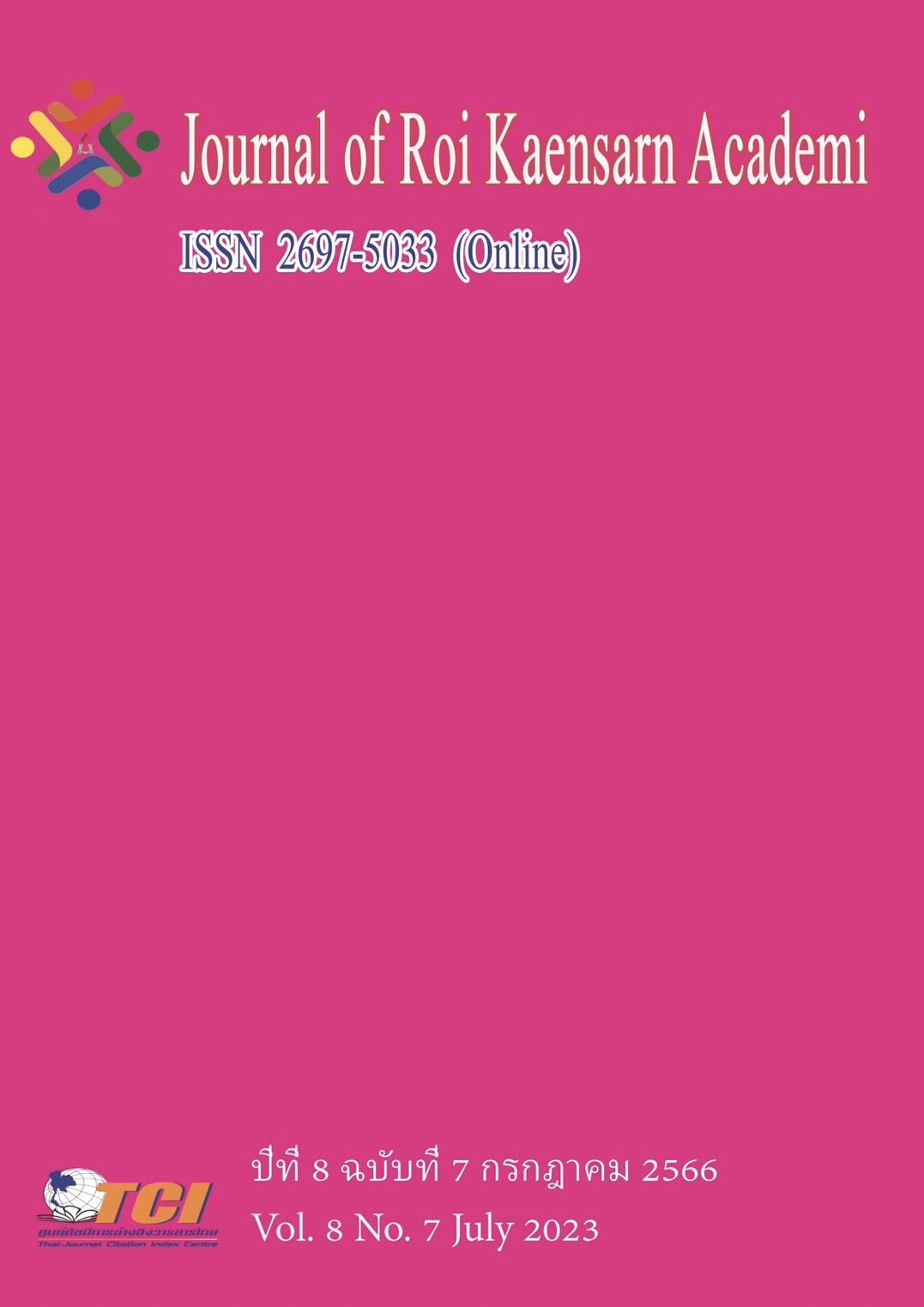The Art Education Management in Higher Vocational Colleges of Hubei Province
Main Article Content
บทคัดย่อ
The aim of this study was to find the art education management in higher vocational colleges of Hubei Province. The research established a theoretical framework based on related literature on art education management, Ethnographic Future Research and related studies/researches on art education management. A total of 17 art education management experts from three groups were selected by the researcher to be the participants of this study. The researcher conducted one-to-one interview with the experts to explore their perceptions of the art education management in higher vocational colleges of Hubei Province. The data collected from the experts were analyzed and summarized by the researcher. Subsequently, the researcher constructed several dimensions related to the art education management in higher vocational colleges of Hubei Province using the data collected from the expert interviews. The results of this study revealed ten key dimensions that were vital for the art education management in higher vocational colleges in Hubei Province. These dimensions are as follows: 1) Curriculum and instructional management, 2) Teacher professional management, 3) Student support system management, 4) Internationalization integration management, 5) Technology integration management, 6) Quality assurance, 7) Philosophy of art education management, 8) Promotion of cultural heritage preservation, 9) Artistic resource management, and 10) Safety and risk management. In order to consider the management of art education in higher vocational colleges of Hubei Province, it was necessary to focus on the ten dimensions that were identified and summarized in this study.
Article Details
เอกสารอ้างอิง
Ali, A. I., & Mohamed, M, S, A. (2017). Educational Management, Educational Administration and Educational Leadership: Definitions and General concepts. SAS Journal of Medicine, 12, 326-329.
Chang, P. P. (2013). Liu Haisu's thoughts on art education management and the transformation of art education in modern China. Art evaluation, (01), 30-34. [in Chinese]
Chen, L. (2021). The current situation and thinking of internationalization development of higher vocational colleges in Hubei province under the background of "Double High Plan . Journal of Hubei Radio & Television University, 41(1), 50-54. [in Chinese]
Gordon, H. S. J. (2021). Ethnographic futures research as a method for working with Indigenous communities to develop sustainability indicators. Polar Geography, 1-22.
Kuo, F. Y. (1998). Managerial intuition and the development of executive support systems. Decision Support Systems, 24 (2), 89–103.
Mao. P. (2013). New thoughts on the reform of university art education. Art Panorama, 12, 154. [in Chinese]
Meng, J. F. (2010). The practice and thinking of art education in higher vocational colleges. Mechanical vocational education, 8, 32-33. [in Chinese]
Mintzberg, H. (1973). The nature of managerial work. New York: Harper & Row.
Mitchell, M. M. (2002). Exploring the future of the digital divide through ethnographic futures research. First Monday, 7 (11), 129-134.
Olla, P., & Choudrie, J. (2013). Mobile technology utilization for social development in developing countries: An ethnographic futures research study. Information Systems Frontiers, 16 (3), 369–382.
Ren. Y. B. (2018). Research and discussion on management strategies for arts education in higher education. Academic development, (20), 154. [in Chinese]
Ruzic-Dimitrijevic, L., & Dakic, J. (2021). The risk management in higher education institutions. Online Journal of Applied Knowledge Management, 2 (1), 137-152.
Sun, Y., & Huang, H. (2015). Art quality education in higher vocational colleges. Science and technology information, 15. [in Chinese]
Tao, T. T. (2019). A Review on Literature Studies of Art Education Management. Explorations in Music, (03), 56-62. [in Chinese]
Textor, R. B. (1980). A Handbook on Ethnographic Futures Research. Stanford, CA: Stanford University Press.
Textor, R. B. (1995). The Ethnographic Futures Research Method: An Application to Thailand. Futures, 27 (4), 461-471.
Ulger, K. (2019). The Effect of Problem-Based Learning on the Creative Thinking and Critical Thinking Disposition of Students in Visual Arts Education. Interdisciplinary Journal of Problem-Based Learning, 12 (1), 3-6.
Wang, T. (2012). Analysis and countermeasures on the development of higher vocational art education. Education exploration, 12, 92-93. [in Chinese]
Wu, M. D., & Geng, H. F. (2021). Strategies and Practices for Safeguarding Intangible Cultural Heritage in Response to Urbanisation - Focusing on Art Education. Journal of Nanjing Arts Institute (Fine Arts & Design), (04), 123-127. [in Chinese]
Zhang, H. (2020). The sustainable development path of public art education in colleges and universities. Theory and Practice of Education, 12, 9-11. [in Chinese]
Zheng, G. C. (2013). Strengthening arts education in schools and Improving the quality of students in all aspects. Research Achievements of the National Teachers' Research Special Fund (Shenzhou Education), 3, 136. [in Chinese]

